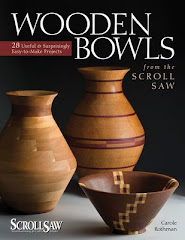So, for me, speed is important, and over the past few years, I've streamlined my approach. First, if glue spots may be an issue, it's prudent to apply mineral spirits to the project right after I think I've finished sanding it. This makes any glue spots clearly visible. If you use some chalk to mark them, you'll be able to find them again once the mineral spirits dry. I sand off all I find, using the finest grit that does the job. If they're stubborn and I need a coarse paper to remove all traces, I sand through the grits in that area so it will finish the same as the rest of the project.
Then, I cover the table with newspaper and place the pieces to be finished on small pieces of wood. I apply a thin coat of spray shellac. This seals the wood, and reveals any glue spots I may have missed. I rub down the finish, which tends to be a little rough at this stage, using either 320 grit sandpaper, 0000 steel wool, or a sanding mop at 320 grit.
I tack everything off well (damp paper towel works for me if I'm careful) and apply several coats of clear gloss spray lacquer. This dries very quickly, and between each coat, I check for sags or roughness, and rub them down with the 0000 steel wool. When I've coated the projects to my satisfaction, I give them an overnight dry, then a final rubdown with 0000 steel wool for a soft matte finish.
Since the building is climate controlled, humidity and temperature is not a factor, and I can often complete the entire job within 2 hours or so. Then, I clean up my materials, turn off the fan, and no one even knows I was there!





No comments:
Post a Comment